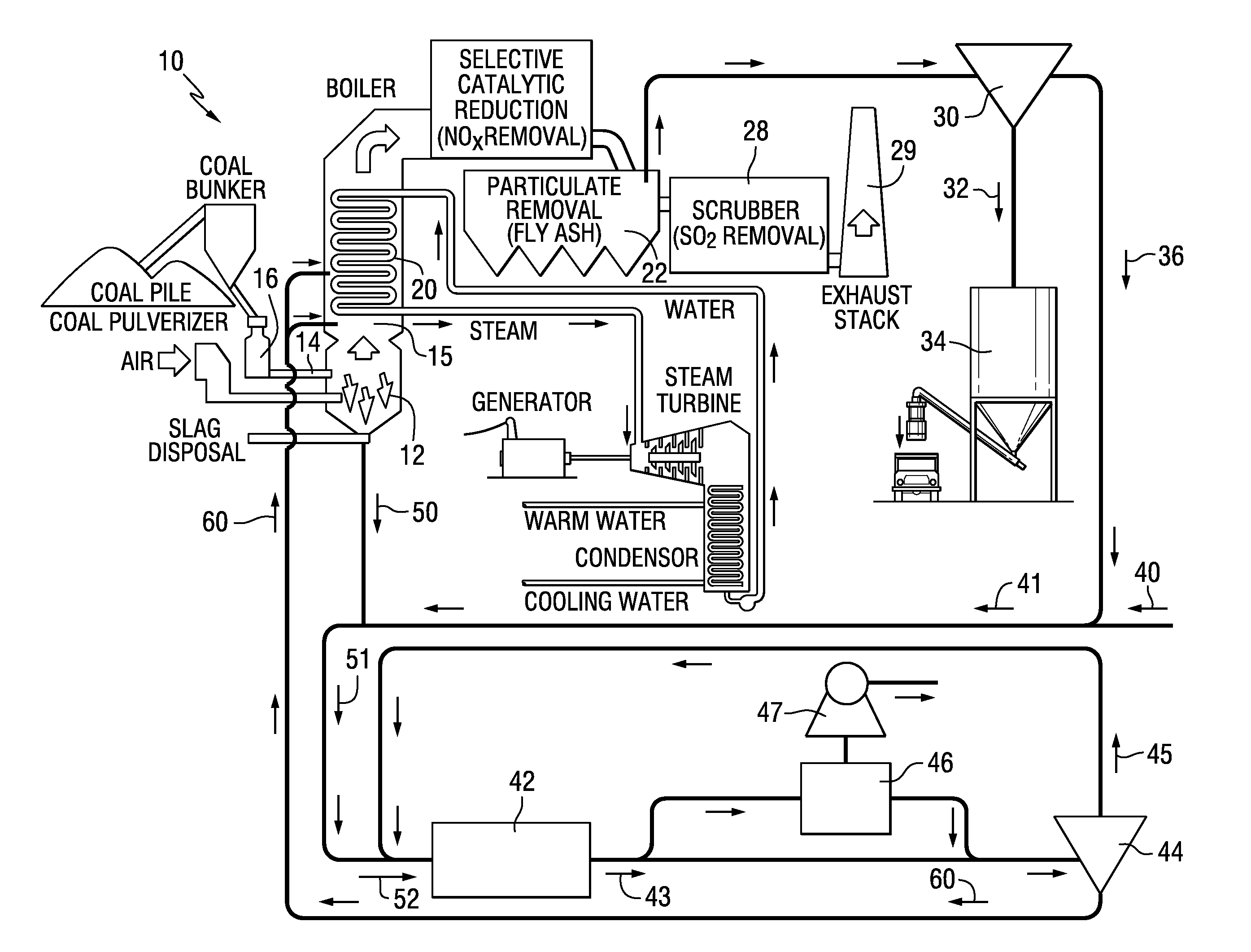Systems and methods for comminuting and recirculating coal combustion products
a technology of coal combustion products and combustion products, which is applied in the direction of combustion types, applications, lighting and heating apparatus, etc., can solve the problems of high economic and environmental cost, large amount of carbon dioxide released into the atmosphere, and high energy consumption of portland cement clinker, so as to reduce the content of unburned carbon and improve the rate of mechanical properties
- Summary
- Abstract
- Description
- Claims
- Application Information
AI Technical Summary
Benefits of technology
Problems solved by technology
Method used
Image
Examples
Embodiment Construction
[0019]The figure illustrates a coal combustion product processing system 10 in accordance with an embodiment of the present invention. The system may be part of a coal-fired power plant, as more fully described below. Coal combustion products generated from the boiler of the coal-fired power plant are fed to a separator 30, where the coal combustion product is separated into a coarse particle fraction and a fine particle fraction. The fine particle fraction may be stored in a silo 34 or other storage container, or transported for various types of uses. The coarse particle fraction is transferred in the direction of arrow 36 to a comminutor 42 comprising any known type of mill, grinder or the like that is used to reduce the particle size of the coarse particle fraction. The comminuted particles 43 are transferred to another separator 44, where coarse particles 45 are removed and recirculated through the comminutor 42. In the embodiment shown, dust produced in the comminutor 42 may be...
PUM
| Property | Measurement | Unit |
|---|---|---|
| Fraction | aaaaa | aaaaa |
| Percent by mass | aaaaa | aaaaa |
| Percent by mass | aaaaa | aaaaa |
Abstract
Description
Claims
Application Information
 Login to View More
Login to View More - R&D
- Intellectual Property
- Life Sciences
- Materials
- Tech Scout
- Unparalleled Data Quality
- Higher Quality Content
- 60% Fewer Hallucinations
Browse by: Latest US Patents, China's latest patents, Technical Efficacy Thesaurus, Application Domain, Technology Topic, Popular Technical Reports.
© 2025 PatSnap. All rights reserved.Legal|Privacy policy|Modern Slavery Act Transparency Statement|Sitemap|About US| Contact US: help@patsnap.com


